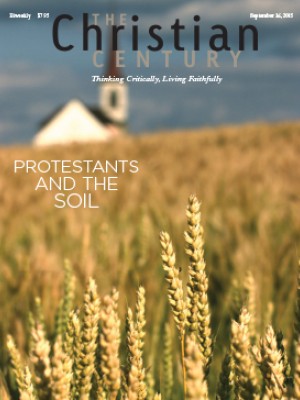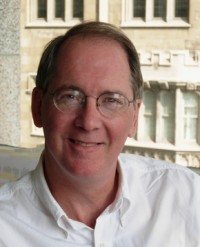Schools engage three faiths in Israel
Four decades ago, the YMCA in Jerusalem opened a “peace preschool” that brought Arab and Jewish children into shared classrooms. Then as now, schools in Israel were strictly divided by language (Arabic or Hebrew) and hence also by religion—Christians and Muslims in Arabic schools, Jews in Hebrew schools. About 15 years ago, some parents at the Y preschool decided they wanted their children’s experience of bilingual, multicultural education to continue beyond the age of five.
That’s the origin of Hand in Hand (Yad b’Yad), a network of six schools in different parts of Israel where Jews, Muslims, and Christians study together and learn each other’s language, tradition, and political views. The school began by opening a first-grade classroom and added a grade each year thereafter. The first Hand in Hand students graduated from high school in 2011.
Read our latest issue or browse back issues.
Hand in Hand schools remain rare outposts of intense engagement between Jews and Palestinians with the goal of building a shared society.
But not everyone is enthused about that project. In June, the Hand in Hand school in Jerusalem was vandalized with anti-Arab graffiti, and in November a classroom was firebombed. The community has not been intimidated, however. After the most recent incident, students covered the graffiti with signs that said “Jews and Arabs refuse to be enemies.”
Each Hand in Hand classroom has two teachers, one speaking Arabic, one speaking Hebrew. Students hear both languages and learn about each other’s religion. Noa Yammer, communications director for Hand in Hand, said religious holidays provide a natural occasion for teaching children about the three religions.
More challenging for teachers, said Yammer, is the question of how to mark national holidays, especially Israel’s Independence Day and Israel’s Memorial Day. Those two days, which follow one another on the calendar, evoke the starkly different histories of Jews and Palestinians. The day that Jews celebrate a triumph of nationhood marks, for Palestinians, the Nakba, the disaster of 1948, when family members were killed or sent into exile by Israeli forces. Whereas Israeli Jews mourn their fallen soldiers as heroes, Palestinians see Israeli soldiers as the people who killed their grandfathers, fathers, and brothers and who now enforce the Israeli occupation of the land.
For teachers and parents, planning how to mark such a holiday takes hours of reflection and conversation, Yammer said. This past year, the community decided to hold separate ceremonies for Jewish children and Arab children so as to acknowledge the meaning of the day for each community. But the two groups came together afterward for a longer, shared assembly at which parents from both sides spoke about their experiences of suffering and their hopes for the future. Students sang songs about peace in Arabic and Hebrew, said Yammer, and displayed art they’d created.
“It’s a tough day,” Yammer acknowledged, but “stepping into shared living is what we need to do if we want the violence to end.”
The Gaza War last summer presented another challenge to Hand in Hand communities. It was a time when people wanted to be among their compatriots, but also a time when it was especially important to come together as a school community, Yammer said. People needed a place “that was about listening, a place for people to say what they were feeling.”
The Hand in Hand community in Jerusalem ended up creating T-shirts with the words “Marching together,” which they wore as they walked together through Jewish and Arab neighborhoods. They didn’t carry any political signs about the war. They simply wanted to “claim public space” and witness to the possibility of a shared society.
When the Israeli-Palestinian conflict seems hopeless, Yammer said, the work of Hand in Hand gives her hope. “It’s not about ‘maybe one day’; it’s about children and families now.”






